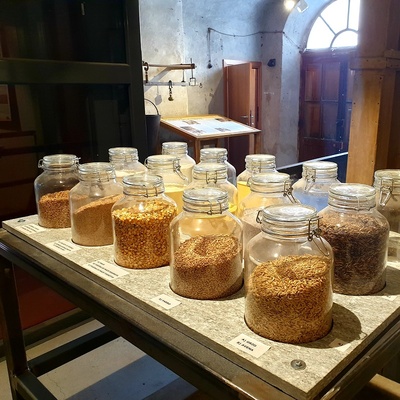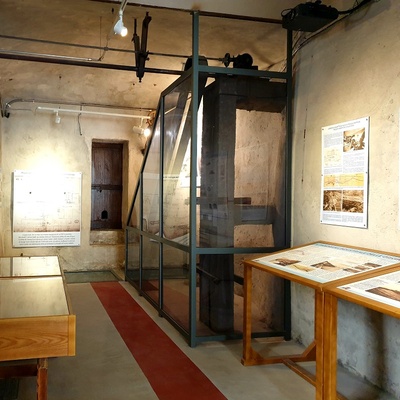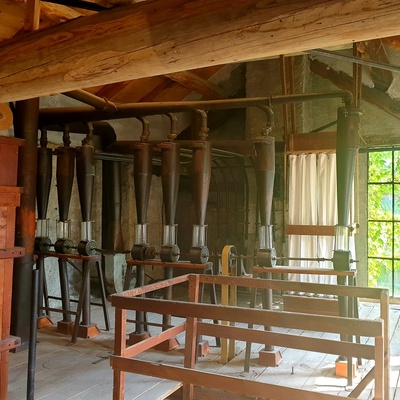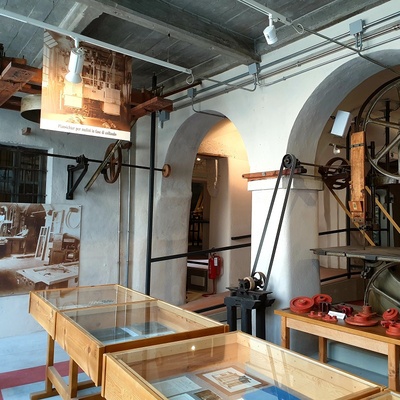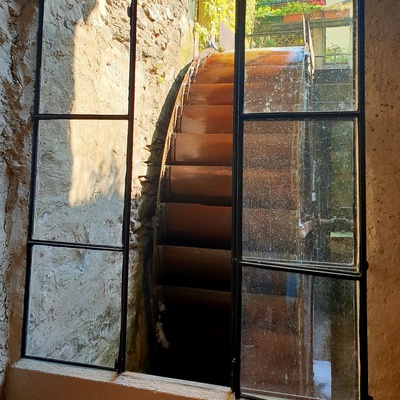
Via Walter Fontan 6, 10053 Bussoleno
The date of the establishment of the Mill definitely predates the construction of the city wall (which dates from the late 14th century). It can be traced back to the 11th/12th century when the mill was called the Mulino del Piano di Bussoleno to distinguish it from the other municipal mill, the mountain mill of Ravoira.
In 1797, it was sold to the Municipality of Bussoleno, which remained the owner and managed it until 1930, leasing it from time to time through public auction to local millers with short-term contracts lasting from three to six years.
From the beginning of the 20th century, the history of the Mulino del Piano intersects with the history of the Varesio family, who managed this mill for over eighty years, through three generations of millers. Between the late 19th and early 20th centuries, three young brothers originally from Asti, where they already practiced the miller's trade, moved with their families to the Susa Valley, taking charge of various local mills (Bruzolo, Mattie, Rivera di Almese, Condove, and Bussoleno). Their names were Michele, Giuseppe, and Secondo Varesio. Michele arrived in Bussoleno in 1905 after being a miller in Bruzolo and was granted the concession of the piano mill until 1911. In 1913, his son Secondo took over, managing the mill continuously until 1949, with the collaboration of his cousin Camillo Varesio, making significant improvements to the plant over the years by replacing the millstones and introducing new machinery.
Simultaneously, Secondo, who had a strong entrepreneurial vocation, opened a carpentry workshop in the premises adjacent to the mill, exploiting the energy produced by the mill's water wheel. During the Great War, he began, almost quietly, the production of milling machines of his invention (mainly grain cleaners and buratti), which decidedly developed from the 1920s, becoming his main and more profitable occupation for over thirty years and guaranteeing him good economic success.
In 1930, he finally bought the municipal building he had rented, including the mill, the civil dwelling, and the workshop, and already the following year expanded and modernized it by utilizing a portion of the small square in front of it.
Secondo Varesio died suddenly in October 1949, at the age of 63, leaving the mill as a legacy to his son Giuseppe.
Giuseppe decided to take control of the mill, completely revolutionizing it and transforming it into the plant that we can still admire today. His project involved installing a new roller milling plant (essentially the modern mill, the technology still used today) within the old 19th-century millstone mill, without dismantling the latter. This particular configuration and technological setup make the plant a unique entity in the panorama of grain milling facilities in Piedmont currently open to visitors. The activity of the Varesio mill ceased definitively on May 11, 1988.
After the closure of the activity, a long period of oblivion began, which lasted until 2011 when the Municipality purchased the building, including the mill, the dwelling, and the workshop, with the declared commitment to transform it into a museum. From that moment, Secondo Varesio, the last heir of the miller family, and Prof. Sergio Sacco provided their expertise and experience to the Municipality of Bussoleno, proposing "a project for the enhancement of the site, whose key points are the restoration of the mechanical part of the milling plant and the adaptation of the workshop annexed to the mill for museum purposes."

